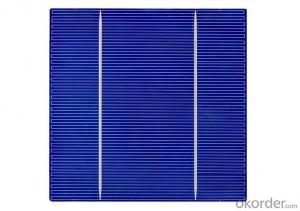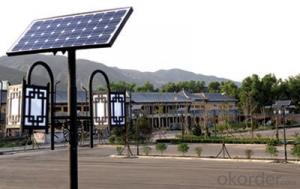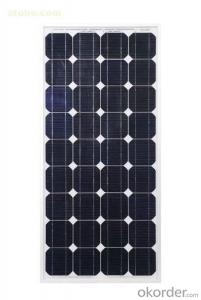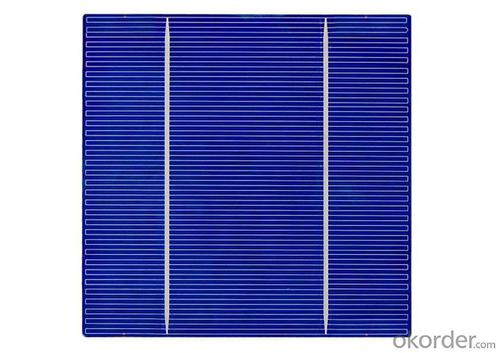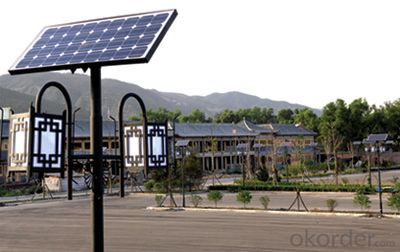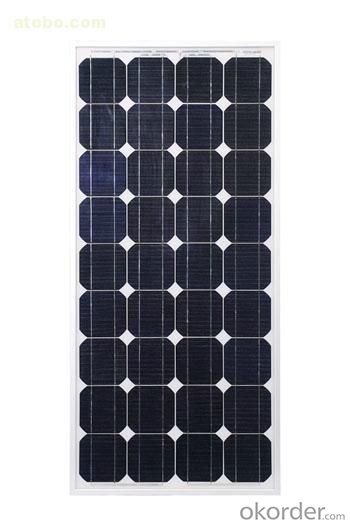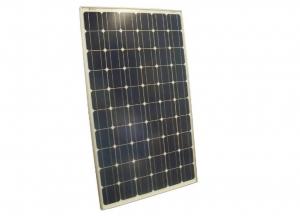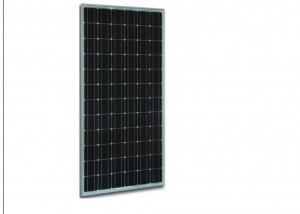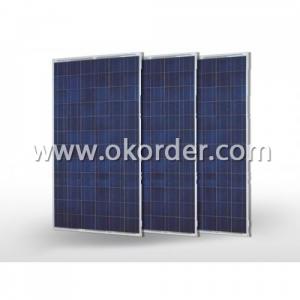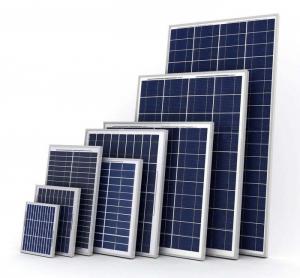Bob's Solar Panels:255W Solar Panels 230W-320W with High Efficiency Best Price
- Loading Port:
- China main port
- Payment Terms:
- TT OR LC
- Min Order Qty:
- 1000 watt
- Supply Capability:
- 100000 watt/month
OKorder Service Pledge
OKorder Financial Service
You Might Also Like
Structure
A PV module is a packaged, connected assembly of typically 6×10 solar cells. Solar PV panels constitute the solar array of a photovoltaic system that generates and supplies solar electricity in commercial and residential applications. Each module is rated by its DC output power under standard test conditions, and typically ranges from 100 to 320 watts. The efficiency of a module determines the area of a module given the same rated output – an 8% efficient 230 watt module will have twice the area of a 16% efficient 230 watt module. There are a few solar panels available that are exceeding 19% efficiency. A single solar module can produce only a limited amount of power; most installations contain multiple modules. A photovoltaic system typically includes a panel or an array of solar modules, an inverter, and sometimes a battery and/or solar tracker and interconnection wiring.
Feature
1. 10 years limited product warranty
2. 15 years at 90% of the minimal rated power output
3. 25 years at 80% of the minimal rated power output
Picture
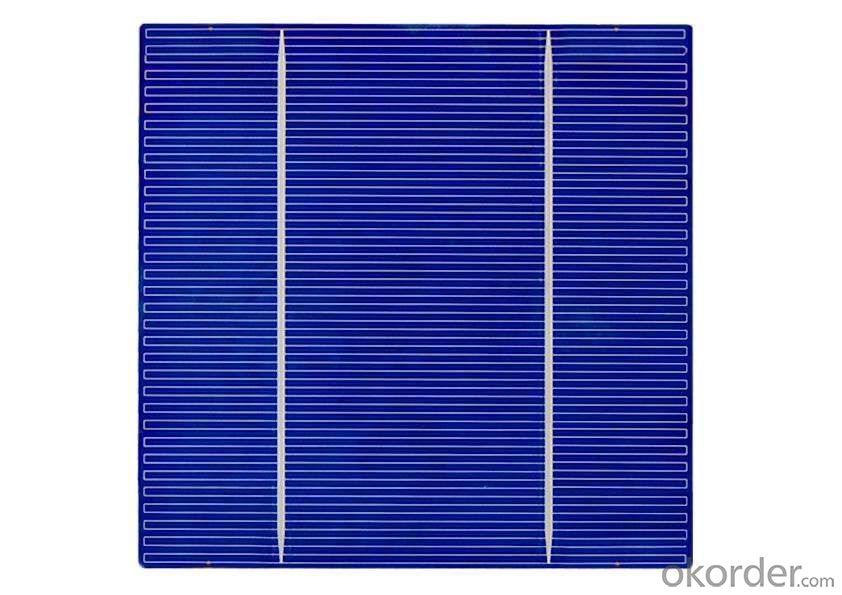
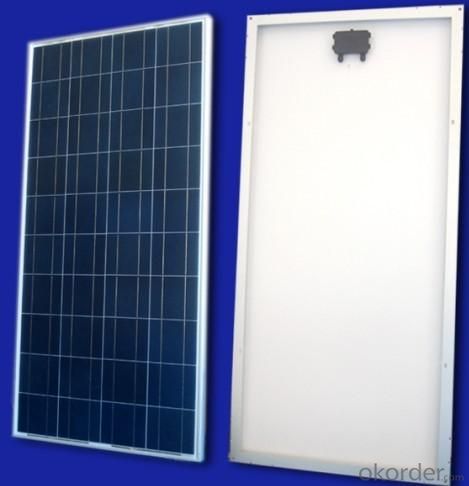
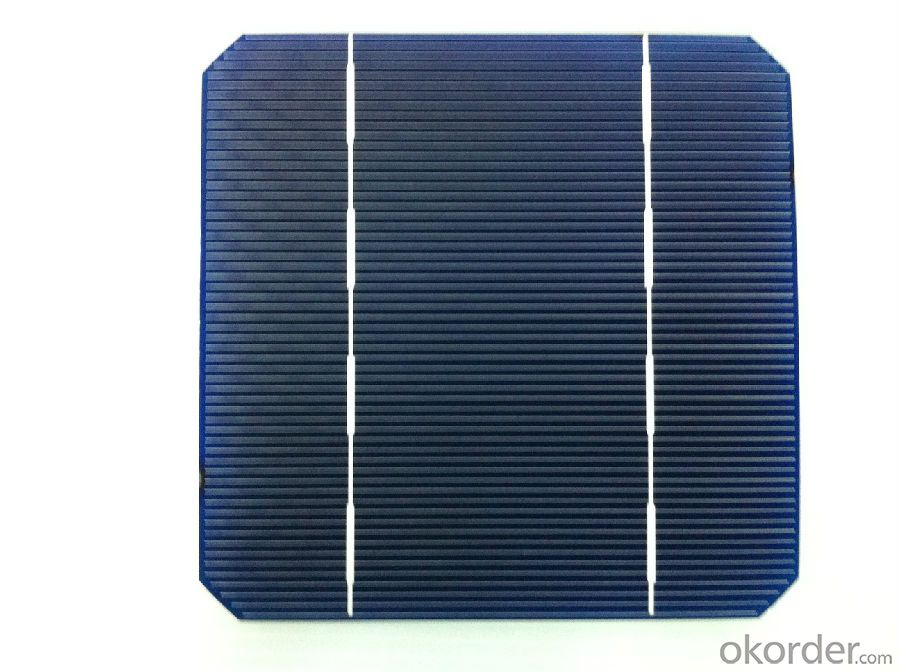
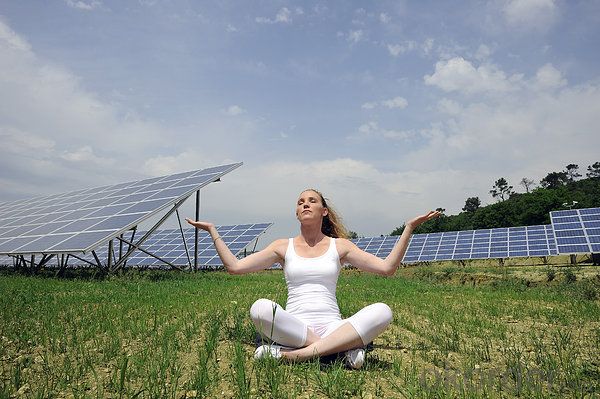
Specification
ITEM NO.: | Poly 156*156 cell ,60pcs . Power range from 230Wp-260Wp | |||||||||
Maximum Power(W) | 230 | 235 | 240 | 245 | 250 | 255 | 260 | |||
Optimum Power Voltage(Vmp) | 29.4 | 29.5 | 29.7 | 30.1 | 30.3 | 30.5 | 30.7 | |||
Optimum Operatige Current(Imp) | 7.83 | 7.97 | 8.08 | 8.14 | 8.25 | 8.37 | 8.48 | |||
Open Circuit Voltage(Voc) | 36.7 | 36.8 | 36.9 | 37.1 | 37.3 | 37.5 | 37.7 | |||
Short Circuit Current(Isc) | 8.52 | 8.59 | 8.62 | 8.65 | 8.69 | 8.73 | 8.78 | |||
Solar Cell: | 156*156 Poly | |||||||||
Number of Cell(pcs) | 6*10 | |||||||||
Brand Name of Solar Cells | JA Cell, Bluesun Cell | |||||||||
Size of Module(mm) | 1650*992*40/45/50 | |||||||||
Cable & Connector Type | Pass the TUV Certificate | |||||||||
Frame(Material Corners,etc.) | Aluminium-alloy | |||||||||
Back sheet | TPT | |||||||||
Weight Per Piece(KG) | 19.5KG | |||||||||
FF (%) | 70-76% | |||||||||
Junction Box Type | Pass the TUV Certificate | |||||||||
Tolerance Wattage(e.g.+/-5%) | ±3%, or 0-3% | |||||||||
Front Glass Thickness(mm) | 3.2 | |||||||||
Temperature Coefficients of Isc(%) | +0.04 | |||||||||
Temperature Coefficients of Voc(%) | -0.38 | |||||||||
Temperature Coefficients of Pm(%) | -0.47 | |||||||||
Temperature Coefficients of Im(%) | +0.04 | |||||||||
Temperature Coefficients of Vm(%) | -0.38 | |||||||||
Temperature Range | -40°C to +85°C | |||||||||
Surface Maximum Load Capacity | 5400Pa | |||||||||
Allowable Hail Load | 23m/s ,7.53g | |||||||||
Bypass Diode Rating(A) | 12 | |||||||||
Warranty | 90% of 10 years, 80% of 25 years. | |||||||||
Standard Test Conditions | AM1.5 1000W/ 25 +/-2°C | |||||||||
Packing | carton or pallet | |||||||||
1*20' | 14 Pallets / 316pcs | |||||||||
1*40'STD | 25 Pallets / 700pcs | |||||||||
FAQ:
Are you a trading company or manufacturer? | Manufacturer with factory |
What kinds of filter do you produce? | It covers for air filter,oil filter,fuel filter for car and truck |
Is Customized filter available? | Yes,please offer your required specifications and drawing |
Do you Accept OEM service? | YES! |
what’s your delivery terms? | FOB (2)CFR (3)CIF |
What's your Delivery Time? | 1)generally the samples will be sent immediately by the air express in 3-5 days if the goods are in stock |
2)Normally within 30 days,please confirm with us before order! | |
What's the Payment Terms? | Usually,30% as deposit,70% before shipment by T/T |
Western Union acceptable for small amount. | |
L/C acceptable for large amount. | |
Scrow ,Paybal,Alipay are also ok | |
How you pack products? | Normally,plastic bag inside and carton outside .We'll do according to customers' requirement |
What's your available port of Shipment? | Normally, Tianjin Other ports available but you should afford extra charges. |
Trade and Market | Main Market Western European 20% |
- Q: I have a cabin that is way out in the middle of no where, it would cost 000's of dollars to get power to it. If I have a 8,000 BTU air conditioner that runs on 25 volts and 5 amps (or 875 watts)How many solar panels will I need to run this during the day, plus charge the batteries to run it all night? How many batteries would I need
- OK, in addition to the solar panels, you wil need an inverter (DC to AC; 2V t0 20V) capable of delivering 20A continuously and as much as 40A for the compressor starting surge, and a fairly large battery bank capable of delivering something over 2000 watts continuously (losses in the charging and conversion process) as well as the surge. So, if your actual demand is now calculated around 2000 watt/hour, and you need to both run the unit and charge batteries during the daylight hours - and considering that the ideal charging rate for a lead-acid battery is on the order of 0% of its capacity, you will need a huge reserve on the battery section and a huge excess on the solar section to make up for the 5 hours maximum input. So, the average high-quality deep-discharge battery will do about 400Ah @ 2.6V. Which comes to 5040 watts for one hour. For round figures, it will give you 2000 watts for 2.5 hours. You will need a minimum of eight of them just to make your system run for the 9 hours you are anticipating. Given that you do not want to run the batteries to zero each night, a 50% reserve would be a wise investment - comes to now twelve (2) batteries. Now, you will have to make 2000 watts (to run the unit) and also produce and another 8600 (per hour for five hours) watts to charge the batteries for the next night. Again, for round figures, you will need 0,000 watts of solar power, or seventy (70) panels. At ~0 watts/s.f. (00 watts/meter), that comes to about 000 square feet or 00 square meters. Modern non-crystaline panels may reduce this by 20%, or so but no more than that. You will be charging the batteries at roughly 20% of their discharge capacity - which will pretty much cut their service live in half, or so. As the average deep-discharge battery has about an 8-year life span under ideal conditions (and your situation will be far from ideal) you may expect to replace them every four years or so with good care. Much less with no care.
- Q: Are there any disadvantages to using solar panels?
- Yes, there are a few disadvantages to using solar panels. Firstly, the initial cost of installing solar panels can be quite high, although this cost has been decreasing in recent years. Additionally, the efficiency of solar panels can be affected by factors such as weather conditions and shading. Furthermore, solar panels require a significant amount of space for installation, which may not be feasible for everyone, especially in urban areas. Finally, solar panels are dependent on sunlight availability, making them less effective during cloudy or nighttime conditions.
- Q: Where can I find good instructions to build a cheap solar panel on my own?
- Building solar panels is not really a do it yourself kind of job. They are made in high tech factorys with specialized equipment and experianced engineers. It would probably be cheaper and easier to just buy some panels rather than try to make your own.
- Q: What is the impact of hailstorms on solar panels?
- Hailstorms can potentially cause damage to solar panels, particularly if the hailstones are large and the panels are not adequately protected. The impact can range from minor scratches and dents, which may not affect the overall performance of the panels, to more severe damage that can impair their functionality. However, advancements in technology and the use of durable materials have made modern solar panels more resistant to hail damage. Proper installation and maintenance, including the use of protective measures like tempered glass or hail guards, can further minimize the impact of hailstorms on solar panels.
- Q: Do solar panels require regular inspections?
- Yes, solar panels do require regular inspections to ensure their optimal performance and detect any potential issues or damage that may affect their efficiency.
- Q: Do solar panels require a specific type of wiring or electrical setup?
- Yes, solar panels require a specific type of wiring and electrical setup. They need to be connected in series or parallel configurations to form a solar array, and the wiring should be sized appropriately to handle the current produced by the panels. Additionally, an inverter is typically required to convert the DC power generated by the panels into AC power that can be used in homes or businesses. Proper grounding and safety measures must also be considered during installation.
- Q: What is the average size of a solar panel?
- The average size of a solar panel is typically around 65 inches by 39 inches, or approximately 5.4 feet by 3.25 feet. However, the actual size can vary depending on the manufacturer and the specific model of the solar panel.
- Q: Can solar panels be used in areas with high levels of heatwaves?
- Yes, solar panels can be used in areas with high levels of heatwaves. In fact, solar panels can still generate electricity in extreme heat, although their efficiency may decrease slightly due to the temperature increase. However, it's worth noting that high temperatures can also lead to increased energy consumption for cooling, which may offset the benefits of solar energy to some extent. Nevertheless, solar panels remain a viable and sustainable solution for electricity generation in areas with high levels of heatwaves.
- Q: Can anyone give me a simple but informative explanation on how solar panels produce electricity/power? Thank you!
- solar panel absorb sunshine , and it will produce electric charger, the charger move to one direction, it wil produce electric current, so it produce electricity. the electricity can through cable move to solar battery to store or to country power grid to provide electricity for people using.
- Q: How do solar panels affect the roof's integrity?
- Solar panels can have a positive impact on a roof's integrity as they act as a protective layer, shielding the roof from various weather conditions. Additionally, solar panels can help extend the lifespan of a roof by reducing direct exposure to sunlight, preventing damage caused by UV rays. However, it is important to ensure proper installation by professionals to avoid any potential issues such as leaks or added weight that could compromise the roof's integrity.
Send your message to us
Bob's Solar Panels:255W Solar Panels 230W-320W with High Efficiency Best Price
- Loading Port:
- China main port
- Payment Terms:
- TT OR LC
- Min Order Qty:
- 1000 watt
- Supply Capability:
- 100000 watt/month
OKorder Service Pledge
OKorder Financial Service
Similar products
Hot products
Hot Searches
Related keywords
